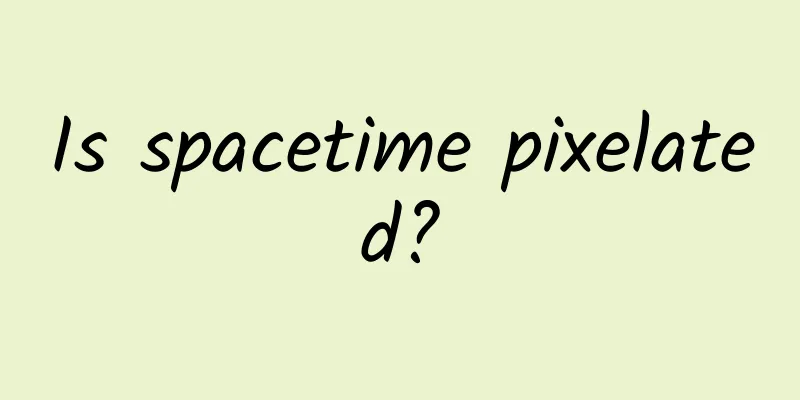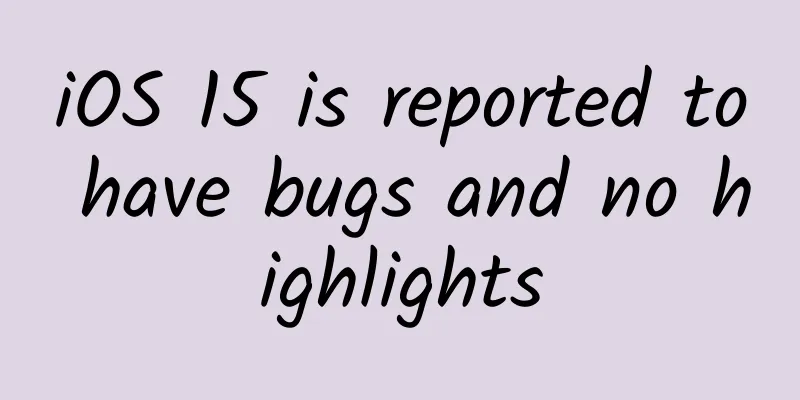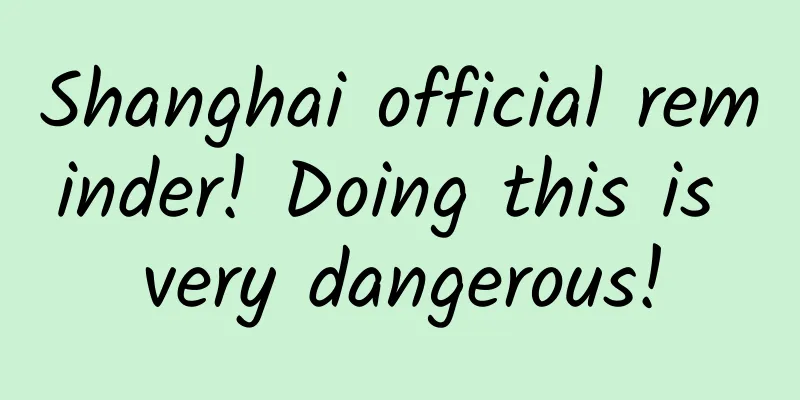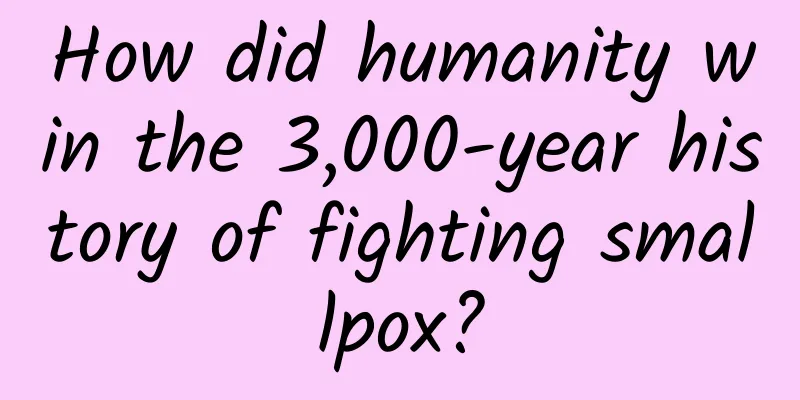Is spacetime pixelated?

|
Is space-time pixelated? Just like looking at a digital picture, when it is magnified many times, we can see blocks of pixels. If space-time is quantized at the smallest scale - a foamy ocean of particles from which gravity and other particles emerge, we may be able to find ripples on the surface - observable features of quantum gravity. This is a solution currently proposed by theoretical physicists to solve quantum gravity and is ready to be tested experimentally. By Whiteny Clavin Translation | Zhang Yi Progress made in the study of the characteristics of quantum gravity From a distance, a sand dune looks smooth and wrinkle-free, like a silk sheet spread across the desert. But closer scrutiny reveals more detail. As you approach a dune, you might notice ripples in the sand; as you touch the surface, you discover individual grains of sand. The same is true with digital images: enlarge an apparently perfect portrait sufficiently and you’ll discover the countless different pixels that make up the image. The universe itself may be equally pixelated. Rana Adhikari, a professor of physics at the California Institute of Technology, and others believe that the space we live in may not be completely smooth, but composed of extremely small discrete units. "The spacetime pixel is so small that if you magnify it to the size of a grain of sand, an atom will be as big as a galaxy," he said. Adhikari and physicists around the world are looking for this pixelation because it is a prediction of one of the most profound physics puzzles of our time: quantum gravity. Quantum gravity refers to a set of theories, including string theory, that aim to unify the macroscopic world of gravity, governed by general relativity, with the microscopic world of quantum physics. At the heart of the puzzle is whether gravity and the spacetime it inhabits can be “quantized,” or broken down into its individual components, a hallmark of the quantum world. “Sometimes there’s a misconception in science communication that implies that quantum mechanics and gravity are irreconcilable,” said Clifford Cheung, a professor of theoretical physics at Caltech. “But we know from experiments that we can do quantum mechanics on this planet with gravity, and it’s clear that they are consistent. The trouble comes with subtle issues about black holes, or trying to unify them on very short distance scales.” “Gravity is a hologram.” —Monica Jinwoo Kang Because of the tiny scales involved, some physicists consider finding evidence of quantum gravity in the foreseeable future an impossible task. Although researchers have proposed various ideas for how to look for clues to its existence—around black holes; in the early universe; even using LIGO, the National Science Foundation-funded observatory that detects gravitational waves—no one has yet to find any traces of quantum gravity in nature. Kathryn Zurek, a professor of theoretical physics, hopes to change that. She recently formed a new multi-institutional collaboration, funded by the Heising-Simons Foundation, to study how to observe the signatures of quantum gravity. The project, called Quantum Gravity and Its Observational Signatures (QuRIOS), brings together string theorists and particle theorists who are familiar with the formal tools of quantum gravity but have little experience in experimental design, and model builders who are good at experiments but not working in quantum gravity. “The idea that we might find observable signatures of quantum gravity is pretty far from the mainstream,” she said. “But if we don’t start looking at ways to connect quantum gravity to the natural world we live in, we’ll be lost in the desert. Thinking in terms of having observational signatures can connect us theorists together and help us make progress on new problems.” Rana Adhikari (left) and Katherine Zurick (right). | Image source: Lance Hayashida/Caltech As part of the collaboration, Zulik will work with experimentalist Adhikari to design a new experiment using benchtop instruments. The experiment, called Gravity from Quantum Entanglement of Space-Time (GQuEST), will be able to detect not individual space-time pixels themselves, but the connections between those pixels that produce observable features. Adhikari likens the search to tuning an old-fashioned television. "When I was growing up, if we couldn't get NBC, we'd try to tune the channel. But most of the time, we'd just see a snowflake of pixels. We know that some of that snowflake comes from the cosmic microwave background, or the birth of the universe, but if you tune in just right, you can see snowflakes from solar storms and other signals. That's what we're trying to do: listen carefully to those snowflakes, or fluctuations in spacetime. We'll see if the fluctuations in the snowflakes are consistent with our models of quantum gravity. We may be wrong, but we have to try." A new blueprint for the universe Solving the puzzle of quantum gravity would be one of the greatest achievements in physics, on par with the two theories that researchers want to unify. Einstein's general theory of relativity reshaped our view of the universe, showing that space and time can be thought of as a continuum - spacetime - that curves in response to matter. According to general relativity, gravity is nothing more than the curvature of spacetime. The second theory, quantum mechanics, describes the three other known forces in the universe besides gravity: electromagnetism, the weak nuclear force, and the strong nuclear force. A defining feature of quantum mechanics is that these forces can be quantized into discrete wave packets or particles. For example, the quantization of the electromagnetic force results in a particle called a photon, which makes up light. Photons work behind the scenes at microscopic scales to transmit the electromagnetic force. Although the electromagnetic field appears continuous at the large scales we are accustomed to, when you zoom in, it becomes "bumpy" because of photons. The central question of quantum gravity, then, is: does spacetime also become a frothy sea of particles at the smallest scales, or is it as smooth as a lake? Physicists generally believe that gravity should be bumpy at the smallest scales; these bumps are hypothetical particles called gravitons. But when physicists use mathematical tools to describe how gravity emerges from gravitons at extremely small scales, the whole thing falls apart. “It became mathematically impossible, producing ridiculous answers like infinity instead of the expected finite numbers. That meant something was wrong,” said Hirosi Ooguri, the Fred Kavli Professor of Theoretical Physics and Mathematics and director of the Walter Burke Institute for Theoretical Physics. “People didn’t quite understand how difficult it would be to have a consistent theoretical framework to unify general relativity and quantum mechanics. It seemed impossible, but we had string theory.” Hiroshi Ooguri | Image source: Brandon Hook/Caltech Bottom Strings Many physicists would agree that string theory is the most complete and likely theory of quantum gravity yet. It describes a 10-dimensional universe, with six dimensions curled up and the remaining four making up space and time. True to its name, the theory posits that at the most fundamental level, all matter in the universe is made of tiny strings. Like a violin, the strings resonate at different frequencies, or notes, with each note corresponding to a unique particle, such as an electron or photon. One of those notes corresponds to the graviton. John Schwarz, the Harold Brown Professor Emeritus of Theoretical Physics, was one of the first to realize the power of string theory to bridge the gap between the quantum world and gravity. In the 1970s, he and his colleague Joël Scherk used the mathematical tools of string theory to describe the strong force. But they realized that if they switched gears, the theory’s disadvantages could turn into advantages. “Instead of insisting on building a theory of the strong force, we took this beautiful theory and asked ourselves what was good about it,” Schwartz said in a 2018 interview. “It turns out it’s very good for gravity. Neither of us worked on gravity. It wasn’t something we were particularly interested in, but we found that this theory was a poor description of the strong force and led to gravity. Once I realized that, I knew what I was going to do for the rest of my career.” It turns out that gravity is a bit of a weirdo compared to the other forces. "Gravity is the weakest force we know of," explains Ohguri. "The reason gravity doesn't pull me through the floor when I'm standing on the fourth floor of the Lauritsen Building is that I'm supported by electrons and atomic nuclei inside the concrete. So the electric field is winning over gravity." However, while the strong force weakens over shorter and shorter distances, gravity becomes stronger and stronger. "These strings help soften this high-energy behavior," Oguri said. "The energy is dispersed within a string." A tabletop test of quantum gravity The challenge of string theory is not only to make it consistent with our everyday, low-energy world, but also to test it. To see what happens at the extremely small scales of space and time—where it is theorized to be granular—experiments have to go down to distances called Planck lengths, on the order of 10-35 meters. To reach such extreme scales, scientists must build an equally extreme detector. "One way is to make something the size of the solar system and look for signatures of quantum gravity," Adhikari says. "But that's too expensive and would take hundreds of years!" Instead, Zulik says researchers can use much smaller experiments to study various aspects of quantum gravity. "For the low-energy experiments we propose, you don't need the whole machinery of string theory," she says. "Theoretical developments related to string theory have given us some tools and a quantitative understanding of what is expected to be true in quantum gravity." The experimental approach proposed by Zulik, Adhikari and their colleagues focuses on the effects of quantum gravity that can be observed at more manageable scales of 10-18 meters, still very small but potentially feasible using extremely precise laboratory instruments. "The spacetime pixel is so small that if you magnified it to the size of a grain of sand, then an atom would be as big as a galaxy." —Rana Adhikari These tabletop experiments are like mini-LIGOs: L-shaped interferometers that fire two laser beams in perpendicular directions. The beams bounce off mirrors and meet where they started. In LIGO’s case, gravitational waves stretch and compress space, affecting the time when the lasers meet. Quantum gravity experiments will look for a different type of spacetime fluctuations, made up of gravitons, which pop in and out of existence in what some call the quantum or foam of spacetime. (Photons and other quantum particles also pop in and out of existence because of quantum fluctuations.) Rather than looking for individual gravitons, researchers will search for observable signatures caused by “long-range correlations” between complex collections of these hypothetical particles. These long-range connections, Zulik explains, are like larger ripples in the ocean of spacetime, rather than the porous foam in which individual particles reside. “We thought that the presence of spacetime fluctuations might perturb the [laser] beam,” she said. “We wanted to design a setup in which the spacetime fluctuations would kick a photon out of the interferometer laser beam, and then we could use a single-photon detector to read the spacetime perturbation.” Emerging Spacetime "Gravity is a hologram," said Monica Jinwoo Kang, a Sherman Fairchild postdoctoral fellow in theoretical physics at Caltech, explaining the holographic principle. The holographic principle is a key tenet of Zurich's model. The principle, which was realized in the 1990s using string theory, means that three-dimensional phenomena such as gravity can emerge from a flat, two-dimensional surface. "The holographic principle means that all the information within the volume of something is encoded on the surface," Kang explained. More specifically, gravity and spacetime emerge from the entanglement of particles that occurs on a two-dimensional surface. Subatomic particles are entangled across space; the particles act as a single entity without direct contact with each other, a bit like a flock of starlings. "The modern view of quantum gravity, inspired by string theory, suggests that spacetime and gravity emerge from networks of entanglement. Along these lines, spacetime itself is defined by the degree to which something is entangled," Kang said. “If we don’t start looking at ways to connect quantum gravity to the natural world we live in, we’re going to be lost in the desert.” — Kathryn Zurick In the experiment proposed by Zulik and Adhikari, the idea is to probe this two-dimensional surface, or what they call the "quantum horizon," to look for fluctuations in gravitons. Gravity and spacetime emerge from the quantum horizon, they explain. "Our experiment will measure the fuzziness of this surface," Zulik says. This fuzziness would represent a pixelation of spacetime. If the experiment succeeds, it could help redefine our concepts of gravity and space at the most fundamental, deepest level. “If I let go of the coffee cup and it falls, I assume that’s gravity,” Adhikari said. “But just like temperature isn’t ‘real’ but describes how a bunch of molecules vibrate, maybe spacetime isn’t a real thing. We see flocks of birds and schools of fish moving in unison, but they’re actually made up of individual animals. We call group behavior emergent. Similarly, something that emerges from the pixelation of spacetime happens to be given the name gravity because we don’t yet understand what the core of spacetime is.” This article is translated from Quantum Gravity: The Quest for the Pixelation of Space — Caltech Magazine Original link: https://magazine.caltech.edu/post/quantum-gravity Special Tips 1. Go to the "Featured Column" at the bottom of the menu of the "Fanpu" WeChat public account to read a series of popular science articles on different topics. 2. Fanpu provides a function to search articles by month. Follow the official account and reply with the four-digit year + month, such as "1903", to get the article index for March 2019, and so on. Copyright statement: Personal forwarding is welcome. Any form of media or organization is not allowed to reprint or excerpt without authorization. For reprint authorization, please contact the backstage of the "Fanpu" WeChat public account. |
>>: Look! Here is a group of "sponge sheep" that can photosynthesize
Recommend
China Association of Automobile Manufacturers: Automobile retail sales in April 2022 fell by more than 30% year-on-year
In April 2022 , affected by the epidemic, consump...
How should people with suspected or mild COVID-19 infection be cared for at home?
Following Xi'an and Shenzhen, the epidemic in...
Saved it! A complete collection of commonly used auxiliary tools for APP promotion!
Some people say that App promotion is hard work. ...
What is aggregate thinking? What types of aggregation pages are there?
After completing the basic steps of on-site optim...
When you have insomnia or can’t sleep, does closing your eyes and “squinting” count as resting?
The cover image of this article comes from the co...
Who can be trusted in home entertainment? The key to smart living room is to return to the essence
That's right, the intelligent transformation ...
How to design a high-conversion training camp from scratch?
I've been receiving a lot of inquiries about ...
Interesting details of Windows Android subsystem revealed: It even supports Xbox platform?
[[421589]] Although the release date of the offic...
How did Yuan blue and white porcelain, the ancestor of blue and white porcelain, appear and become popular in the world?
The Yuan blue and white double-handled small jar ...
Marketing promotion: from short videos to selling products through live streaming!
Against the backdrop of the live streaming craze,...
If your eyes feel "tired", it is actually reminding you...
Dry eyes, sore eyes, swollen eyes, As I read the ...
After reading the font series of articles, do you still think I am talking about fonts?
[[208286]] Recently, I have been writing a series...
How to use short videos to direct traffic to the live broadcast room!
This is a relatively hardcore article. In additio...
Seven details determine whether you can be a successful entrepreneur
[[154346]] Now is an era of entrepreneurship for ...
In the face of the great test of the epidemic, how can educational institutions focus on online marketing and promotion?
The sudden outbreak of the pneumonia has brought ...









